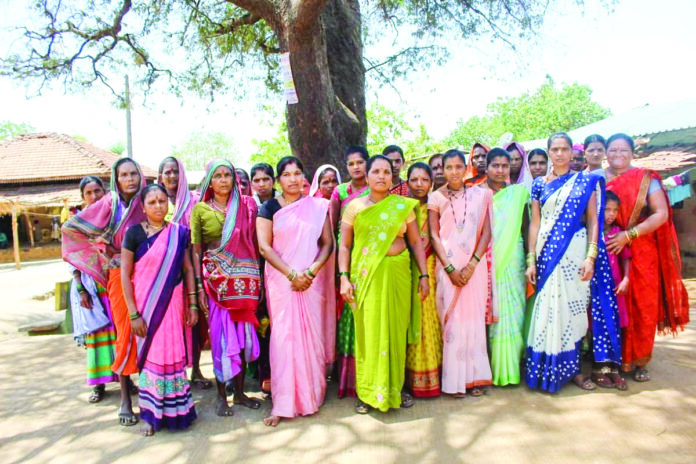In the heartlands of Western Maharashtra, where child marriage remains an entrenched social norm, two women, Deepali and Abhita, are reclaiming their right to education.
In the dusty lanes of rural Maharashtra, two women—Deepali Ravindra Sukale and Abhita Rupesh Dagade—are quietly rewriting their destinies. Once child brides forced to drop out of school, they are now mothers and students, juggling textbooks alongside toddler tantrums and domestic chores. Their stories are not just about individual triumphs but a searing commentary on the systemic failure that allows child marriage and the denial of education to persist.
When Childhood Ends Too Soon
Both Deepali and Abhita hail from Solapur district, an area where the norms of early marriage, child labour, and gender discrimination still hold sway, especially within the NT-DNT (Nomadic and Denotified Tribes) communities. Married at 14, Deepali was pulled out of school and thrust into domesticity. In her community, girls are typically married off after Class 8, and boys pushed into manual labour like stone breaking. Education is seen not as a right but a luxury.
Deepali’s family, reeling under economic duress, migrated from their village in Alsunde to seek better livelihoods. Her parents earned a paltry Rs. 500 a day as wage labourers, barely enough to support their large family. Deepali’s marriage at 16 was not a celebration but a necessity—a desperate act by her parents to ease the financial burden. Yet, she never let go of her dream to learn. Facing resistance from her husband and in-laws, it took persistent advocacy from CRY (Child Rights and You) volunteers to change minds. With their help, Deepali enrolled in night school, studied diligently, and passed her SSC exams with 56%. Today, she is learning computer skills and mentoring others in her community.
Abhita’s story mirrors this trajectory. Married soon after her Class 9 exams, she found herself immersed in household chores and parenting two children. In her Wadar community, women’s education is frowned upon post-puberty. But attending parents’ group meetings rekindled her desire to study. Again, it took sustained counselling of her family by CRY to convince them to let her return to school. She passed her SSC with 62%—her first exam in over a decade—and now dreams of completing her HSC and starting her own school transport business. She’s even learning to drive, breaking into a male-dominated field with the resolve to make education safer and more accessible for girls.
What the Numbers Say
These aren’t isolated cases. NFHS-5 (2019-21) data paints a grim picture: In rural Maharashtra, 10.6% of girls aged 15–19 are already mothers. In districts like Aurangabad and Nashik, over 30% of women aged 20–24 were married before 18. The fertility rate among girls aged 15–19 is a staggering 63% in rural areas—more than double the rate in urban Maharashtra. Behind every teenage mother is a disrupted education, a stalled career, a silenced voice.
For every young bride, a seat in school lies empty—not because she failed the system, but because the system failed her. Despite strict laws against child marriage, the practice thrives due to socio-economic vulnerabilities, gender norms, and lack of grassroots-level enforcement. And once married, returning to education is a Herculean challenge for these young women—made harder by societal stigma, financial dependence, and rigid patriarchal expectations.
Education: A Lifeline, Not a Luxury
Critics may argue that adult women returning to school is symbolic at best—that it does little to reverse the damage of lost childhoods. But that argument misses the point. Education is not just a certificate; it’s agency, self-worth, and economic independence. When a woman like Abhita dreams of running her own transport business, she’s not just earning—she’s reshaping societal norms.
Moreover, educated mothers raise educated children. Studies across the globe show that a mother’s education level strongly influences her children’s health, education, and socio-economic mobility. In that sense, investing in mothers’ education creates a ripple effect that benefits entire communities.
Changing the Narrative, One Woman at a Time
The success of Deepali and Abhita is not just theirs—it belongs to every social worker who persisted, every parent who reconsidered, and every teacher who encouraged. Their journeys are powerful reminders that change is possible when communities invest in women.
Organizations like CRY have played a crucial role by creating awareness, engaging with families, and building supportive ecosystems. Their approach—persistent, personal, and patient—is a model worth replicating. But the responsibility cannot rest solely on NGOs. The state must do more to strengthen implementation of child protection laws, offer flexible education programs for young mothers, and challenge harmful gender norms through community engagement.
Conclusion: A Second Chance is a Right, Not a Favour
Educating our mothers is not an act of charity—it’s a correction of historical injustice. Deepali and Abhita’s lives tell us that when given a second chance, women don’t just survive—they thrive. They lift others with them, break cycles of poverty, and redefine what’s possible.
As a society, we must ask ourselves: Are we doing enough to ensure every woman who lost her education to child marriage gets a shot at reclaiming her dreams? If not, it’s time we did. Because when we educate a mother, we educate a generation.
The author is Director, CRY – Child Rights and You, West Region








